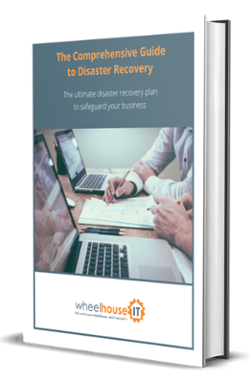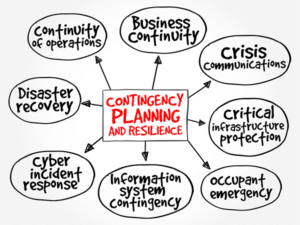
Massive data loss can destroy a business. Ransomware, fires, floods, and physical theft are just a few of the ways that your data could be wiped out. The irrecoverable loss of business records is worse than any physical loss. Insurance can cover the harm to furniture, equipment, and even an entire office, but it can’t bring back lost information. Research has shown that half of all organizations haven’t implemented the data protection and recovery processes they need to survive a disaster. Without disaster recovery services, a business will take weeks to put its data back together, and some data will be impossible to get back. Downtime means lost revenue, and it will eventually lead to bankruptcy.
The Causes of Data Loss
Physical disasters are a leading cause of on-site data loss. A fire, electrical surge, or flood can make disk drives inoperable. Combined with other damage from the event, the inability to continue normal data processing seriously disrupts business operations.
Online crime targets a company’s most valuable data. Ransomware encrypts files, making them unusable, and demands a payment for restoring them. It attacks backup files if it can reach them. Giving in to the extortion demand doesn’t always get the files back.
Burglars can break into an office and steal computers. The chances of getting them back are low. Break-ins cause damage beyond what is physically carried off.
User error can wipe out or corrupt important files. It might be a long time before you notice, making it hard to restore them.
The 3-2-1 Backup Strategy
A widely recommended approach to protecting data is the 3-2-1 strategy. This means having at least three copies of your data, on two or more devices, with at least one of them in a remote location.
The three copies include the active version of the data, a local backup, and a remote backup. The local backup is the easiest to keep up to date, since you have a high-bandwidth connection to it that doesn’t depend on the Internet. The remote one is safe from events that affect your office and could damage the local backup.
Backup vs. Disaster Recovery
Having a backup is important, but it’s not the same as a disaster recovery plan. Saving files isn’t enough. Configuration data, user account information, and license keys are vital to operations. To get back up and running quickly, you need procedures for restoring data and operations when your hardware fails. If you lose an entire disk, can you install a fresh one that will let employees use business applications just as they did before?
To do this, you need not just a file backup but a disk image or a failover system. A complete disk image lets you get everything back into place — files, directories, accounts, and databases. A failover system goes a step further; you turn it on, and it runs everything just as the old system did. Cloud-based failover systems are within the reach of many IT budgets.
Setting up a disaster recovery plan isn’t something you can wing. It starts with an analysis to determine all your requirements. The backup mechanisms need to cover all your essential data, and the recovery process needs to operate with an acceptable amount of downtime. Once it’s in place, the plan needs testing. If a crucial system isn’t being backed up, you want to know about it and correct it before you experience data loss.
Having expert advice will make sure your recovery plan works. We offer backup and recovery plans for businesses throughout South Florida, letting you run your business in confidence that a data-loss incident won’t be more than an inconvenience.
Get in touch with us to discuss the plan that is best for your business. Or if you’re not ready yet, grab the Comprehensive Guide to Disaster Recovery eBook from WheelHouse IT to learn more.








No comment yet, add your voice below!